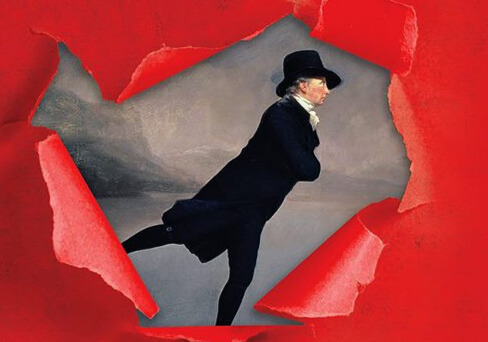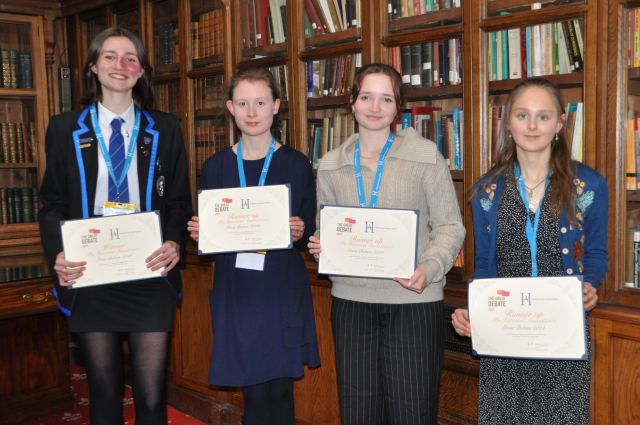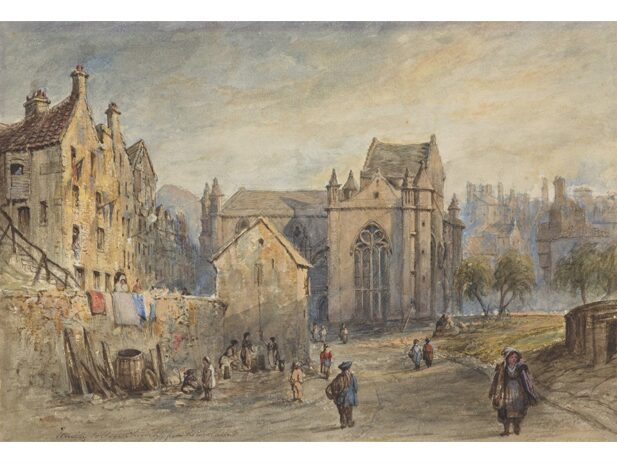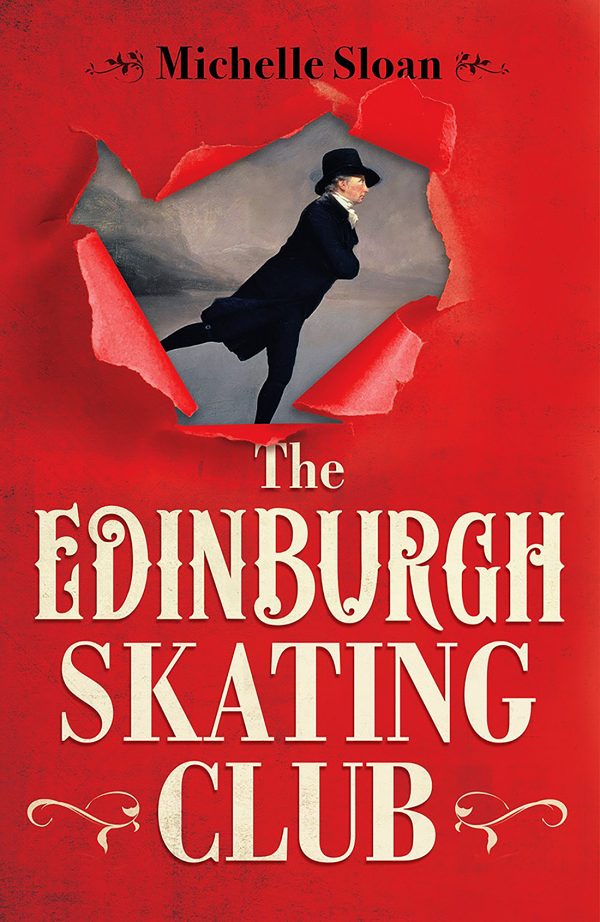
Michelle Sloan’s debut adult novel, The Edinburgh Skating Club (Polygon 2022) skilfully combines two narratives, one set in 18th century Edinburgh and the other in the 21st. The two are connected by the well-known painting of a figure skating in a perfectly balanced position with one leg extended behind the body on what may be Duddingston Loch, often called The Skating Minister.
The National Galleries of Scotland on their website tell us that this “serene skater is thought to be the Reverend Robert Walker, minister of the Canongate Kirk and a member of the Edinburgh Skating Club.” They refer to the difficulty and sophistication of the seemingly effortless manoeuvre depicted and conclude with the comment that “this small picture, showing a figure in action, is quite unlike other known portraits by [Sir Henry] Raeburn.”
Here is an art history mystery. Since its reappearance from complete obscurity in 1902, and well before its purchase by the National Galleries of Scotland in 1949, reservations had been expressed about its attribution to Raeburn. However, no one came up with an alternative until in 2005 it was suggested that the painter could have been Henri-Pierre Danloux. He was a French émigré painter and draughtsman who stayed in Edinburgh regularly between 1796 and 1800. This suggestion has not been universally welcomed.
In The Edinburgh Skating Club, art historian Claire Sharp is challenged to make a definitive attribution of this famous painting. With the help of her historian friend Professor Jennifer Brodie, Claire comes to the conclusion that the subject of the painting may not have been Robert Walker but someone else. The minister’s not a minister! Instead, Claire and Jen identify the skater as Francis Pringle. A shadowy figure, Francis Pringle appears as a member of various other Clubs, but only for a brief period. Nothing is known of his antecedents, and he vanishes from the scene without trace.
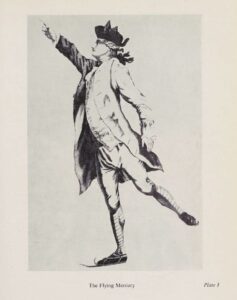 According to Michelle Sloan’s novel, Francis Pringle is not a man, but none other than the remarkable 18th century poet, wit, and socialite Alison Cockburn. Among her many eminent friends was David Hume. When she chased after a runaway dog, Hume was impressed by her speed and agility and remarked: “Your athleticism is quite astounding — for a woman.” In the conversation that follows, Alison indicates that she would like to participate in some of Edinburgh’s Clubs and Societies, and in particular the Edinburgh Skating Club, but that as a woman she is barred.
According to Michelle Sloan’s novel, Francis Pringle is not a man, but none other than the remarkable 18th century poet, wit, and socialite Alison Cockburn. Among her many eminent friends was David Hume. When she chased after a runaway dog, Hume was impressed by her speed and agility and remarked: “Your athleticism is quite astounding — for a woman.” In the conversation that follows, Alison indicates that she would like to participate in some of Edinburgh’s Clubs and Societies, and in particular the Edinburgh Skating Club, but that as a woman she is barred.
Supported by Hume’s sister Katherine and the actor and theatre manager Samuel Foote, Alison Cockburn is “turned into a man” and takes the name Francis Pringle. It is as Pringle that Alison Cockburn learns to skate. Prospective members of the Skating Club had to demonstrate their skating prowess. Sloan has her character not only practise the required set of figures but also jump over three hats — first one hat, then two, and then three, each on top of the other.
It is on the ice that Pringle meets a delightfully elegant skater who turns out to be “the skating minister.” The Reverend Robert Walker, minister first of Cramond and subsequently of Canongate, became a member of the Edinburgh Skating Club in 1780. His father had been minister of the Scots Kirk in Rotterdam and it was probably in Holland that the young Robert had learned to skate before skating became fashionable in Scotland. In her novel Michelle Sloan describes Pringle and Walker meeting and becoming friendly enough for Walker to invite Pringle and Katherine Hume to Cramond Manse for a meal. And Walker encourages Pringle to seek membership of the Club and to demonstrate the requisite skills. Needless to say, Francis Pringle passes this test and is accepted into the membership of the Club.
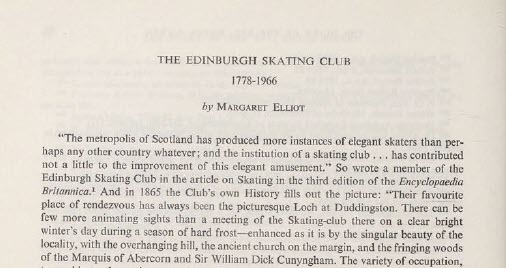 It is the sight of Francis Pringle on the ice at Duddingston Loch that inspires Katherine Hume to take up her brushes and paint him in action. However, like Pygmalion, Katherine Hume falls in love with what in effect is her own creation. This infatuation leads to the moving ending of a highly enjoyable and very readable novel.
It is the sight of Francis Pringle on the ice at Duddingston Loch that inspires Katherine Hume to take up her brushes and paint him in action. However, like Pygmalion, Katherine Hume falls in love with what in effect is her own creation. This infatuation leads to the moving ending of a highly enjoyable and very readable novel.
Although in many respects it is true to life and contains some historical figures, The Edinburgh Skating Club (2022) is a work of fiction. Those who wish to know more about the origins, membership, customs, and rules of the Club can find much interesting information in The Edinburgh Skating Club 1778-1966 (pictured left) by Margaret Elliot and published in volume XXXIII of the Book of the Old Edinburgh Club, part 2, (1971).
By Peter Graham, immediate past President of the Old Edinburgh Club

